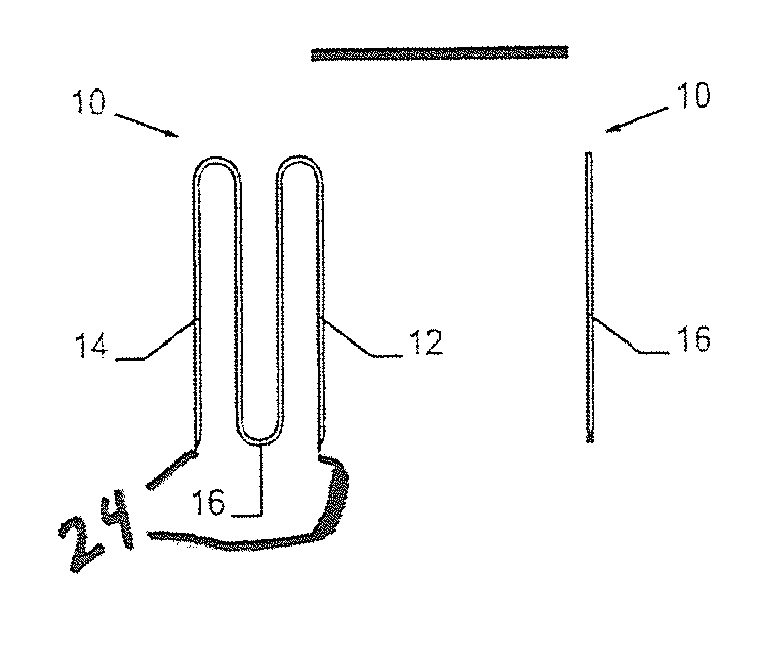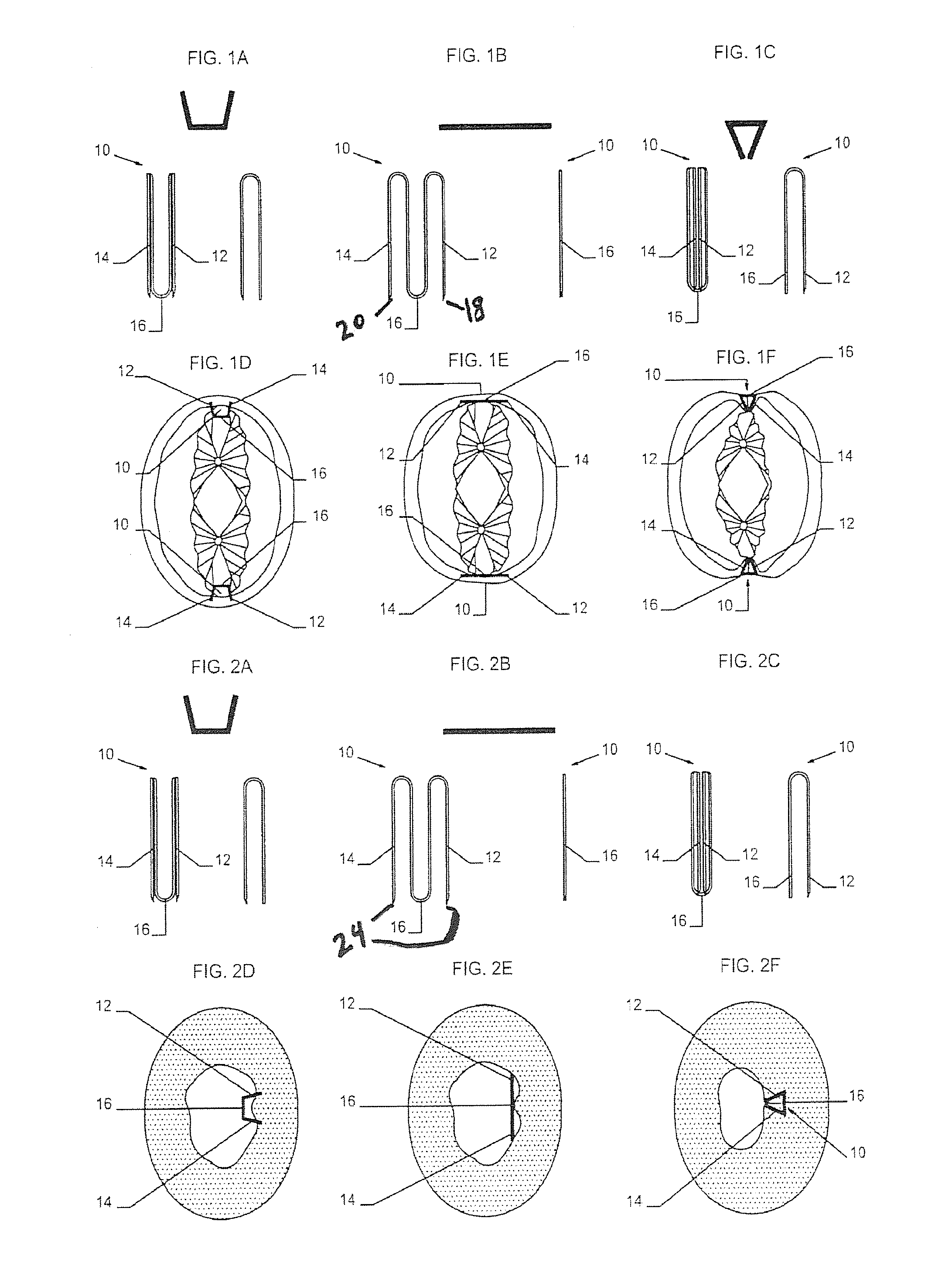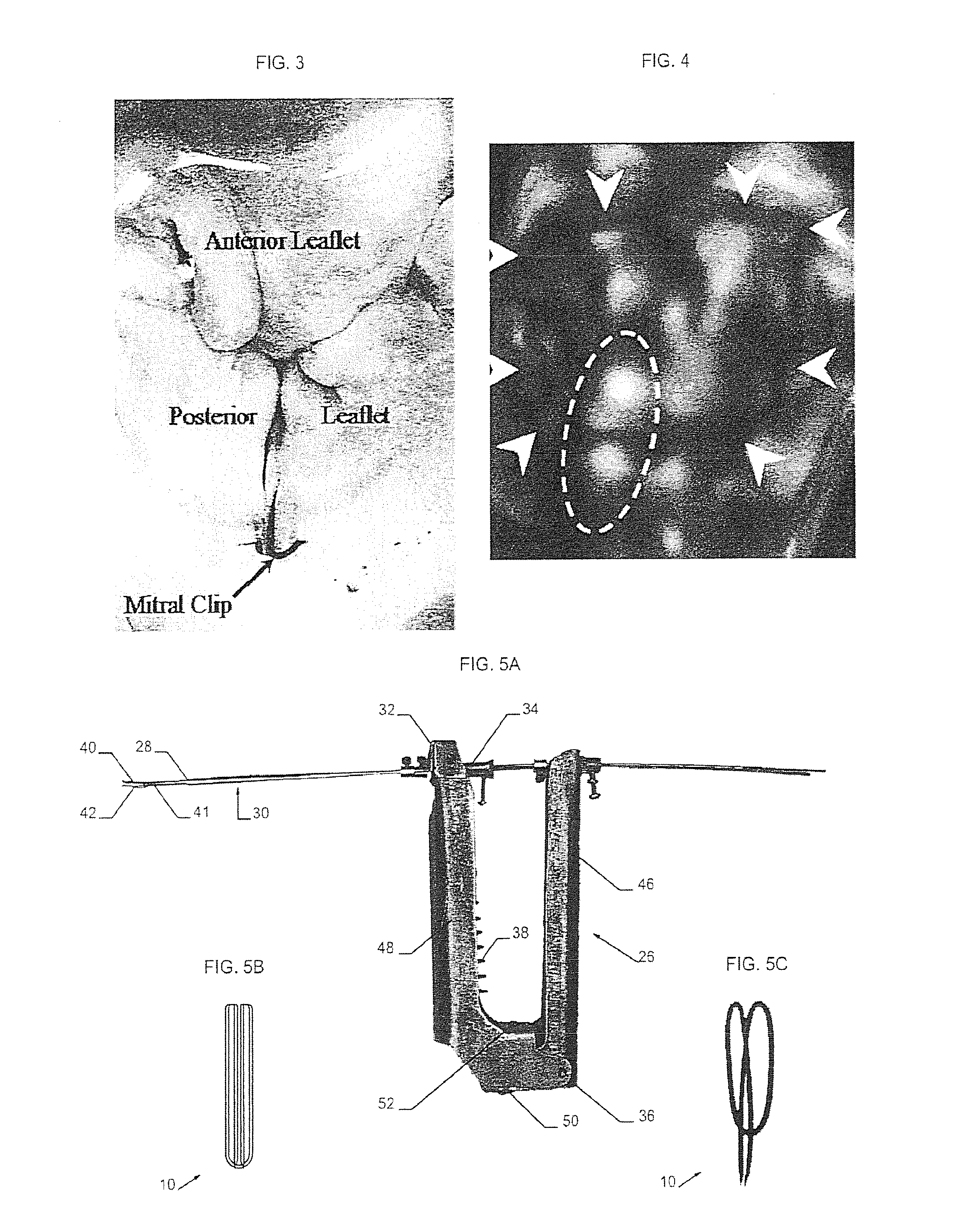Tissue clip
a tissue clip and tissue technology, applied in the field of surgical devices, can solve the problems of cell depolarization and repolarization of the cell itself, difficult to construct an arterial anastomosis, and almost a technical impossibility using minimally invasive techniques
- Summary
- Abstract
- Description
- Claims
- Application Information
AI Technical Summary
Benefits of technology
Problems solved by technology
Method used
Image
Examples
example 1
[0113]Isolated porcine hearts (n=8) were placed into a custom water-filled tank. Left ventricular pressure of 120 mmHg was generated by retrograde flow through the aortic valve. Prolapse of the PL at P2 segment was created by cutting the primary chordae. A clip made of nitinol consists of a loop with two sharpened side arms. The clip was deployed under RT3DE guidance from the left atrium. First, the arms penetrated the PL at the annulus reaching the ventricular surface as the loop was simultaneously positioned on the atrial surface of the leaflet. Then, the arms were rotated toward the loop, folding the prolapsed segment of the PL to create a pleat. The clip was then disconnected from the deployment device. The results were visually assessed by the degree of mitral regurgitation.
[0114]The prolapse was successfully eliminated in seven of eight cases. In one case, residual regurgitation was present, and two additional smaller clips were deployed; this reduced the regurgitation but did...
example 2
[0116]The objective of this experiment was the placement of tissue clips in the mitral ring in order to reduce the diameter of the mitral ring.
[0117]Materials and Methods:
[0118]The following were used for this experiment: three pieces of porcine or sheep heart (260 grams), scalpel, scissors, camera, gloves, fixation system of the tissue clips (Marco), nitinol tissue clips of 0.45, 1, and 2 cm length (5 units of different models).
[0119]Procedure:
[0120]Clots were washed and extracted. The mitral valve was identified. Next, the nitinol tissue clips were placed. Puncture was achieved by the system of fixation, to the level of the mitral ring in two points both near commissures. Five different models of Mitral tissue clips were used, cuts were realized in level of one of the commissures, with the intention of increasing the diameter of the ring. Changes concerning reflux were not evaluated.
[0121]Results:
[0122]Good functioning of the traditional tissue clip is verified (classic tissue cli...
PUM
 Login to View More
Login to View More Abstract
Description
Claims
Application Information
 Login to View More
Login to View More - R&D
- Intellectual Property
- Life Sciences
- Materials
- Tech Scout
- Unparalleled Data Quality
- Higher Quality Content
- 60% Fewer Hallucinations
Browse by: Latest US Patents, China's latest patents, Technical Efficacy Thesaurus, Application Domain, Technology Topic, Popular Technical Reports.
© 2025 PatSnap. All rights reserved.Legal|Privacy policy|Modern Slavery Act Transparency Statement|Sitemap|About US| Contact US: help@patsnap.com



